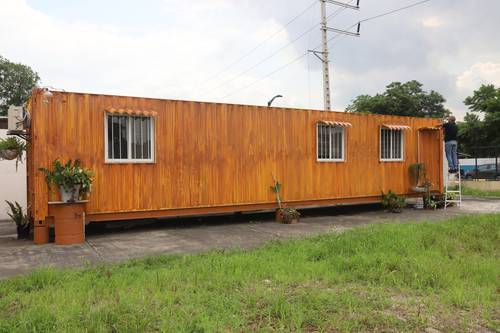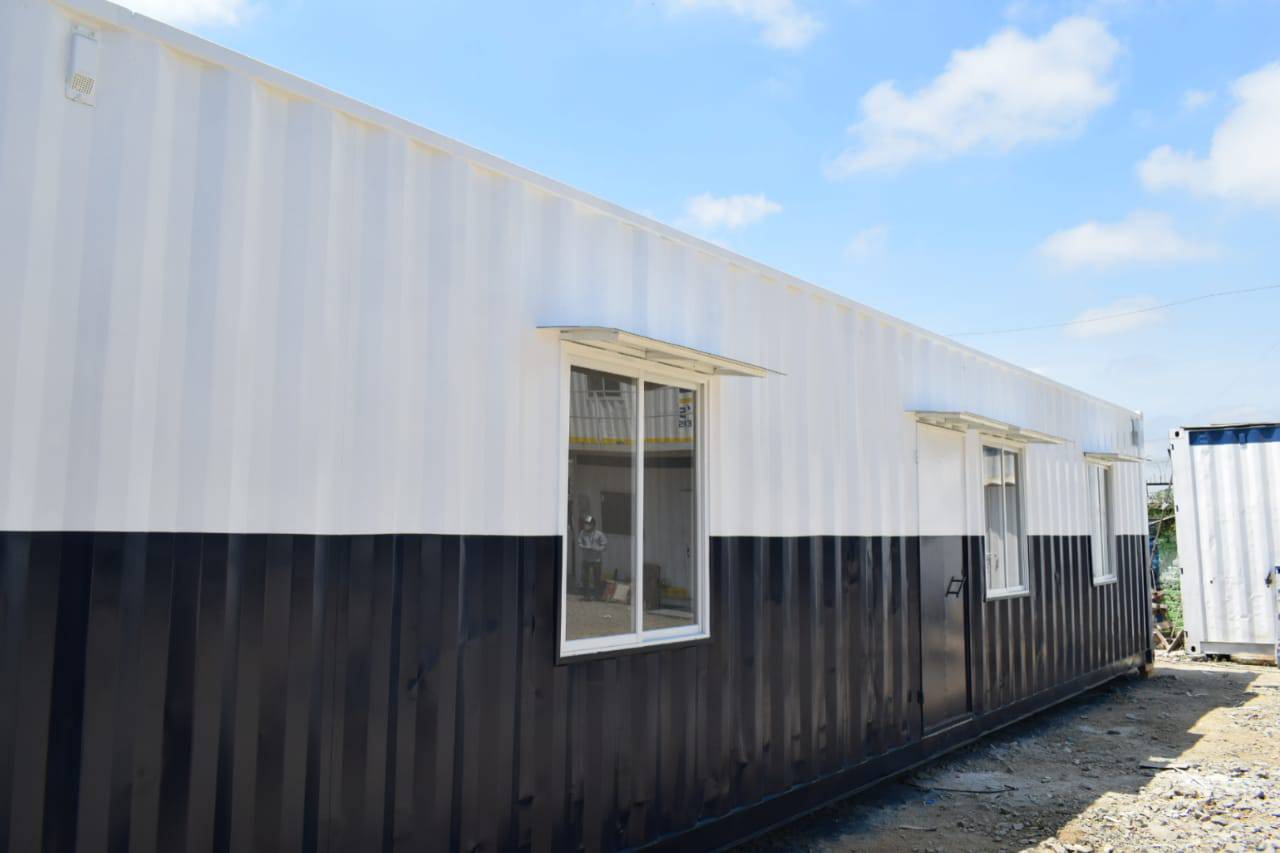To acquire this type of housing, considered easy to mobilize and ranging from $ 10,000 to $ 15,000, you must have a space or land.
In the last decade, containers have become a new architectural element in Ecuador, used to build, under a new concept, different spaces for real estate purposes.
Among the main advantages that these types of buildings have, for which they must have a space or land to install them, is their easy mobilization, assembly and cost, that is well below traditional construction.
Specifically in terms of housing, the savings in materials and labor is one of the points that is making more and more Ecuadorians interested in acquiring them.
“After the earthquake that occurred in the country on April 16, 2016, Ecuadorians found in the container not only a means of transportation, but also an answer to their housing need. From this moment on, every day we experience in the client a desire to have a container house,” says Carlos Román, General Manager and owner of Roman’s Container, a pioneering company in this sector for more than ten years and that has developed more than 2,500 projects with containers.
Román says that from a very young age he was in contact with containers due to his father’s work and says that a few years ago when he worked in the Guayaquil Seaport, his office was in a container and that he got the idea from there to replicate it and promote it to national level with the creation of his company.
More than one container company making waves in Ecuador
Luis Chica is the spokesperson and manager of the Casacont project that has been under development by the company Sealand SA for close to a year and which sells fully furnished container houses with all the necessary facilities.
The project “has been well received due to its low cost, ease of choosing models and quick availability,” says Chica.
“We offer fully furnished container homes with all electrical, water, sewer and septic facilities. We have placed two houses on the beach and we have six projects under development, and at the moment more than a hundred people have asked for advice in this regard and have shown interest,” he says.
The house that Casacont has for sale is built with a 40-foot container that measures 12 meters long by 2.5 meters wide, giving a total of 30 square meters. It has one bedroom, a bathroom, a kitchen and a living room and has a cost of $15,000.
The company offers a payment plan with $500 upfront, and then delivers the container home once 75% of the value has been paid. It is built in three weeks anywhere in the country, except for Galapagos.
What differentiates this project from others is that the house is delivered to the buyer fully equipped with (2) air conditioners, (2) 32-inch televisions, a 4-burner cooktop, a refrigerator, an extractor hood, a microwave oven, a 2-person bed, a sofa bed, a coffee table and closets and shelves.
Chica also mentions that this type of construction can be classified as sustainable, since they are built from recycled containers and that they will soon use solar panels.
Like Casacont, Roman’s Container offers a model home of 30 m2, made in a 40-foot “high cube” container that is 12 meters long by 2.40 meters wide and 2.90 meters high, valued at approximately $10,000, although according to their owner, container houses can start at $6000 and also reach higher prices depending on their finishes.
The house, which is delivered in a maximum of eight working days, has two bedrooms, an American-style kitchen with space for a small living room and dining room and a full bathroom.
The construction has among its finishes: windows and aluminum and glass doors, the interior is covered with drywall on the walls and ceiling, the floor is made of non-slip ceramic and the electrical installations delivered to the client include LED lights and 110 power outlets, and 220 volts. The process to acquire it is by means of an advance of 50% before the manufacture of the house and the balance against delivery.
Until now, the country has not defined any type of standard or regulation for this type of construction, which makes it easier to acquire them, although those who are dedicated to this business usually follow the building and construction ordinances of each city that are imposed by the Autonomous Decentralized Governments (GAD).
“The issue of container constructions is not 100% socialized to have any law or regulation that defines specific requirements for its use. However, in private projects, the client usually establishes guidelines for the construction, adjustments and choice of the product,” says Román.
Meanwhile, one of the main disadvantages of this type of construction is the corrosion to which containers are prone as they are made of different types of metal, although both companies emphasize that maintenance is usually inexpensive.
“The containers are designed and built to withstand seawater and storms for long periods that can exceed two months. On land it is easier and cheaper to maintain it … for its care, it will need to be painted once every five years,” says Chica. And Román recommends “maintenance every two years both inside and outside for aesthetic reasons.”
Other uses of containers
In addition to being an alternative for the real estate sector, in the country you can find laboratories, offices, sanitary stations, sheds, gyms, cold rooms and even restaurants made with containers.
Leonardo Lino, manager of Containers Ecuador Logistic Operations, a company that has been in the market for eleven years, says that so far it has developed more than 100 projects with containers between clinical and research laboratories.
Among his most important works, Lino mentions the Insectarium Laboratory for the breeding and maintenance of insects, which he carried out for the National Vector Reference Center of the National Institute for Public Health Research (Inspi) and which is located in Posorja.
The ‘campers’, mobile offices, swimming pools, sanitary stations, saunas, shelters for natural disasters, gyms, cold or refrigeration rooms to place medicines or products that need a special temperature and commercial premises are also among the works that the company has developed in the country.
The latter have become an innovative option to create recreational spaces with artistic and gastronomic content such as the Plaza Guayarte in Guayaquil, made up of 51 stores and 2 galleries made entirely of containers, as well as the Plaza Gastronomic La Cuadra, located in the canton Daule, and made up of more than 20 stores and some bars, also made with containers.
Both places have taken the concept of European squares or shopping centers in countries of Germany or Spain, or in the region in Colombia or Mexico.


0 Comments